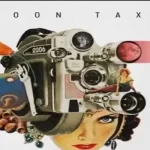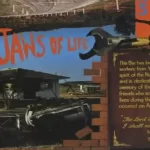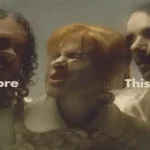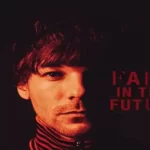Music, an art form that transcends boundaries and languages, has the power to evoke emotions, tell stories, and create unique experiences. Among its diverse genres, one stands out for its mind-altering and immersive nature – Psychedelic Music.

Music Songs Exploring Sonic Dreamscapes
Psychedelic music is a kaleidoscope of auditory sensations, characterized by its experimental and mind-expanding soundscapes. It weaves a tapestry of sounds, often accompanied by ethereal vocals and unconventional instrumentations. Tracks like Pink Floyd’s “Comfortably Numb” and The Beatles’ “Lucy in the Sky with Diamonds” epitomize the genre’s ability to transport listeners to otherworldly realms, pushing the boundaries of musical composition.
Music Artists
The psychedelic music genre owes much of its enchanting allure to the visionaries who crafted its foundation. Iconic artists like Jimi Hendrix, known for his electrifying guitar solos, and Jefferson Airplane, with their hypnotic melodies, paved the way for this genre’s prominence. Their innovative approaches to sound manipulation and composition created a sonic revolution that continues to influence musicians across genres.
Music Examples
To truly comprehend the essence of psychedelic music, one must immerse themselves in its auditory marvels. The Grateful Dead’s improvisational journeys, characterized by extended instrumental passages, exemplify the genre’s spontaneity. Furthermore, Tame Impala’s blend of electronic and rock elements in tracks like “Feels Like We Only Go Backwards” showcases the genre’s modern evolution, enticing a new generation of listeners.
Characteristics of Sonic Tapestry of Psychedelia
At the heart of the psychedelic music genre lies a set of distinctive characteristics. Mind-bending instrumental solos, intricate layering of sounds, and the use of effects like reverb and delay contribute to its signature auditory experience. The incorporation of non-traditional instruments and unconventional song structures further amplifies the genre’s experimental nature, captivating audiences with its unpredictability.
Stylistic Origins
The roots of psychedelic music trace back to the mid-1960s, emerging alongside the counterculture movement. Inspired by the exploration of altered states of consciousness through substances like LSD, artists sought to capture these experiences in sonic form. The genre’s close association with the 1960s hippie movement, fueled by anti-establishment sentiments, further solidified its identity.
Cultural Origins
Psychedelic music not only emerged from cultural shifts but also played a pivotal role in shaping them. It became the sonic backdrop for the counterculture movement, with its themes of freedom, rebellion, and exploration resonating deeply with the era’s youth. The Woodstock Festival of 1969 stands as a testament to the genre’s cultural impact, where hundreds of thousands gathered to celebrate peace and music.
Derivative Forms Influences and Adaptations
As with any genre, psychedelic music has spawned derivative forms that carry its essence in new directions. Psychedelic rock, electronic psychedelia, and neo-psychedelia are just a few examples of how artists have embraced and reinterpreted the genre’s core elements. These adaptations showcase the genre’s enduring influence and its ability to morph while retaining its distinctiveness.
Subgenres
Within the overarching realm of psychedelic music, a myriad of subgenres awaits exploration. The space rock, characterized by its cosmic and otherworldly themes, and acid rock, known for its distortion-heavy sound, are just a glimpse of the genre’s multifaceted nature. Shoegaze, a subgenre marked by its dreamy textures, and psychedelic folk, with its acoustic and introspective qualities, further exemplify the genre’s diversity.
People Also Ask
Q: What defines psychedelic music?
A: Psychedelic music is characterized by its experimental soundscapes, mind-expanding compositions, and unconventional instrumentations that often evoke altered states of consciousness.
Q: Who are some famous psychedelic music artists?
A: Jimi Hendrix, Pink Floyd, The Beatles, The Doors, and Tame Impala are renowned artists who have significantly contributed to the psychedelic music genre.
Q: How did psychedelic music influence culture?
A: Psychedelic music became a soundtrack for the counterculture movement of the 1960s, reflecting themes of freedom, rebellion, and exploration that resonated with the era’s youth.
Q: What are some subgenres of psychedelic music?
A: Subgenres of psychedelic music include space rock, acid rock, psychedelic folk, and shoegaze, each offering unique interpretations of the genre’s core elements.
Q: How does psychedelic rock differ from regular rock music? ?
A: Psychedelic rock is a genre within rock music that draws inspiration from or reflects the psychedelic culture, focused on mind-altering hallucinogenic substances. This genre incorporates novel electronic sound elements and recording methods, features prolonged instrumental solos, and emphasizes improvisation.
Conclusion A Sonic Odyssey of Psychedelia
In the vast realm of music, psychedelic music stands as a mesmerizing portal to alternate dimensions of sound and emotion. Its rich history, innovative artists, and diverse subgenres contribute to a genre that continues to captivate and inspire. Psychedelic music isn’t just a genre; it’s a journey through sonic dreamscapes that invites us to expand our auditory horizons and explore the boundaries of musical creativity. As we conclude this exploration, may the kaleidoscope of sounds and experiences that define psychedelic music continue to resonate with generations to come, guiding them on a captivating voyage through the realms of musical wonder.








